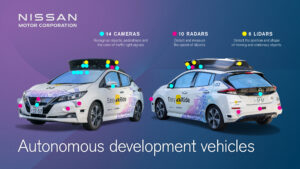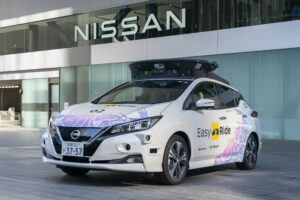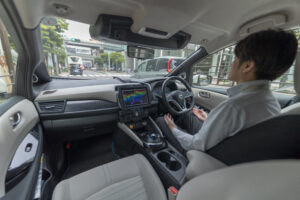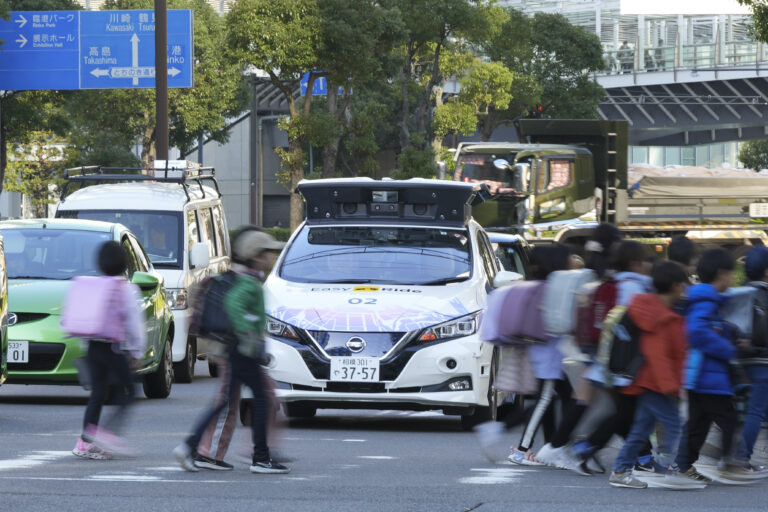Nissan has begun demonstrations on public roads arounds Yokohama in Japan of a prototype vehicle equipped with its proprietary autonomous drive technologies, marking progress toward the company’s goal of launching autonomous mobility services by fiscal year 2027.
The prototype, based on the Nissan Leaf, features 14 cameras, 10 radars, and sic lidar sensors, and is intended to highlight advancements in autonomous driving within complex urban environments. The latest model includes an array of roof-mounted sensors to expand the detection area and enhance the vehicle’s ability to accurately perceive its surroundings.

According to Nissan, the upgrades have improved the prototype’s recognition performance, behavioral prediction, judgment functions and control functions, enabling smooth operation in various complex scenarios.
In Yokohama, the Leaf prototype has demonstrated its capability to predict pedestrian behavior, execute lane changes during merging and navigate intersections safely.
The current demonstration operates at an SAE Level 2 equivalent with a safety driver present. Nissan plans to expand functionality and commence autonomous-drive mobility services in Japan beginning fiscal year 2027. This effort will involve collaborations with local authorities and transportation operators.

In the fourth quarter of this fiscal year, Nissan aims to initiate trials in the Minato Mirai area, and progress to service demonstration tests by fiscal year 2025. The trials will gradually increase the level of autonomous driving functionality while evaluating customer acceptance, with the ultimate goal of providing driverless services.
This initiative is being conducted in close cooperation with the Japanese Ministry of Economy, Trade and Industry; the Ministry of Land, Infrastructure, Transport and Tourism; and other central ministries. These ministries are also promoting new autonomous mobility services through the Level 4 Mobility Acceleration Committee.

Nissan says its long-term vision is to address transportation challenges faced by local communities in Japan, such as driver shortages due to an aging population, and support the free movement of people within these communities.


